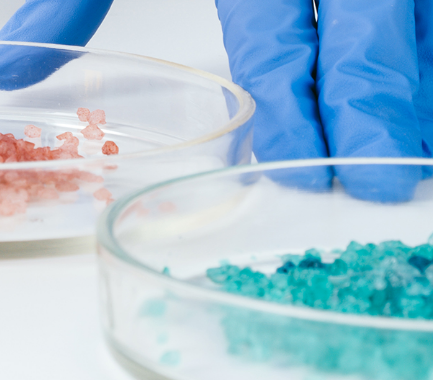Your contact
PENPET-Team - Hamburg

Christoph Meister
Sales
Tel. +49 (0) 40 - 675 7 99 30
sales@penpet.de
Get in touch with us.
Dibasic esters (DBE)
The organic compounds known as dibasic esters (DBE) are dimethyl esters of various carboxylic acids, which are becoming increasingly important as biodegradable solvents for the chemical industry. The substances are obtained by esterification of the starting materials adipic acid, glutaric acid and succinic acid with methanol and are used as a mixture of the corresponding reaction products.
As non-corrosive, non-toxic and very environmentally friendly substances, the dibasic esters represent a significant alternative to many solvents with questionable properties. With their strong dissolving power, they can even be used to dissolve hardened plastic residues and surfaces. The mixture of substances is used in coatings, paints, cleaning agents, strippers, adhesives, binders and plasticizers, among other things.
At PENPET you get dibasic esters (DBE) of the highest quality - from a reliable partner who will also meet your requirements in the long term. We look forward to receiving your inquiry for an individual offer. Prompt delivery of the liquid mixture of substances can be made in packages with different weights.
Components: dimethyl adipate, dimethyl glutarate, dimethyl succinat
Molecular formulas of the components: C8H14O4, C6H10O4, C7H12O4
Areas of application: Biodegradable solvent harmless to health
More Information
The dibasic esters (DBE) represent a mixture of substances from double esters of the dicarboxylic acids succinic acid, glutaric acid and adipic acid. Thus, the molecules of the compounds consist of aliphatic hydrocarbon chains with two, three or four carbon atoms, which are connected at both ends via an ester group with a methyl radical.
Under normal conditions, the substance mixture of the dibasic esters (DBE) is a clear and colorless liquid with a light, pleasant odor of its own with a fruity note. The boiling points of the substances contained are reached at temperatures of 196 °C to 225 °C. When cooled to -20 °C, the mixture of substances crystallizes into a solid substance.
The solubility of the mixture in water depends on the exact proportions of the compounds, but is limited. However, the substances are completely soluble in many organic solvents such as ethers, esters, methanol, ethanol and acetone as well as numerous hydrocarbons. The dibasic esters react with a pH of 3 to 4 in the acidic range.
When stored as intended, the mixture of substances is non-reactive and chemically stable. However, if the dibasic esters (DBE) come into contact with strong acids, strong bases and strong oxidizing agents, dangerous, violent reactions can occur.
The compounds are flammable, but not self-igniting in liquid form. The vapors of the liquid compounds, on the other hand, can form highly flammable and explosive mixtures with the ambient air. When processing open containers of the substance mixture, it is therefore necessary to ensure sufficient distance from possible ignition sources such as electrostatic discharges, hot surfaces, mechanically generated sparks and open flames. When the substances are burned, harmful gases such as carbon monoxide and carbon dioxide are produced.
According to the GHS classification, dibasic esters (DBE) do not represent a hazardous substance. The substances are not known to have any harmful or toxic properties. Regardless of their ready biodegradability, the compounds have been classified as slightly hazardous to water with regard to possible damage to aquatic organisms and should not be released into the environment in concentrated form. The competent authorities must be notified if the mixture of substances leaks into water, into the soil or into the waste water. The dibasic esters are not subject to any special transport regulations.
